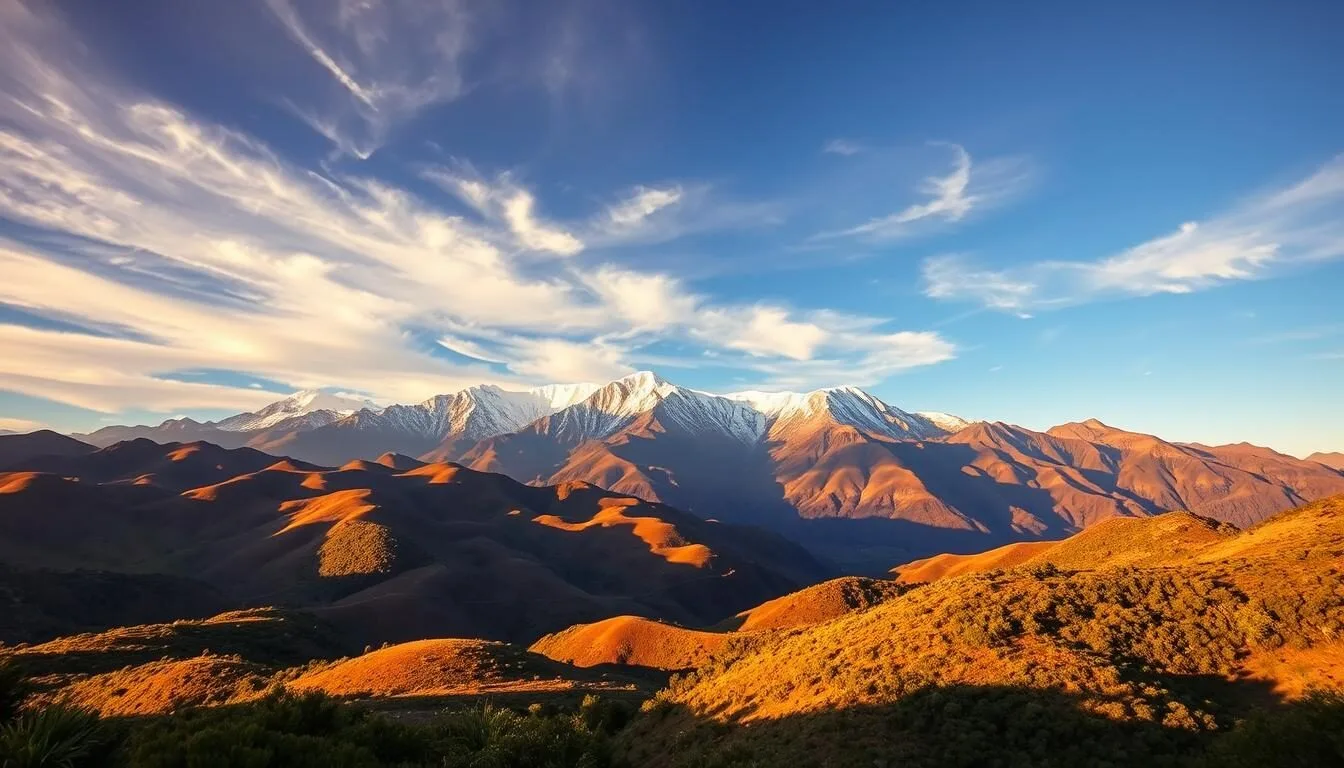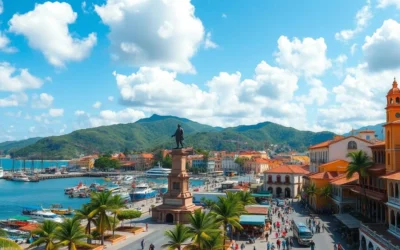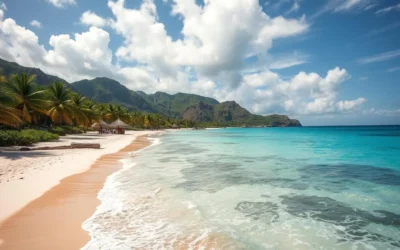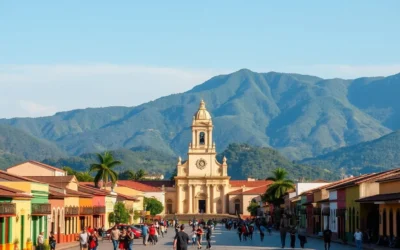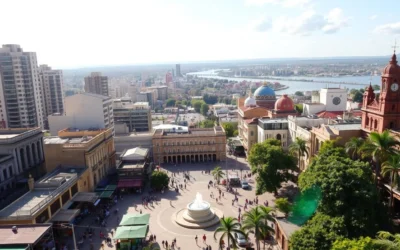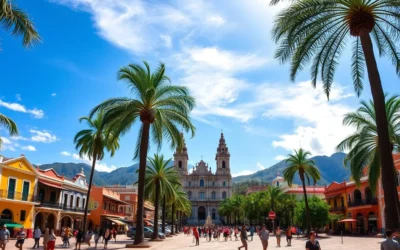✓ Accommodations✓ Flights✓ Rental Cars
Imagine standing at the foot of peaks that soar over 16,000 feet, surrounded by vibrant cities and breathtaking landscapes. The Venezuelan Andes offer an unforgettable experience, with diverse ecosystems ranging from cloud forests to high-altitude páramo environments.
You’ll discover why this region is considered a natural paradise, with attractions like the world’s highest cable car and pristine mountain lagoons. In Mérida city, colonial architecture meets vibrant university life against a stunning mountain backdrop.
Whether you’re an adventure seeker or a nature lover, the Venezuelan Andes have something for you. From hiking and climbing opportunities to unique ecosystems, this comprehensive guide will take you through the top attractions and activities in the region, making your trip to Venezuela an unforgettable experience.
Discovering the Venezuelan Andes: A Natural Paradise
As you step into the Venezuelan Andes, you’re greeted by a breathtaking landscape of towering mountains and serene valleys. This region is a haven for nature lovers and adventure seekers alike, offering a diverse range of ecosystems and activities.
Geography and Climate of the Venezuelan Andes
The Venezuelan Andes are characterized by their rugged terrain, with peaks reaching high altitudes and valleys carved out by rivers. The climate varies with elevation, ranging from temperate in the lower valleys to cold and alpine at higher elevations. The region’s diverse geography supports a wide range of flora and fauna, making it a fascinating area for exploration.
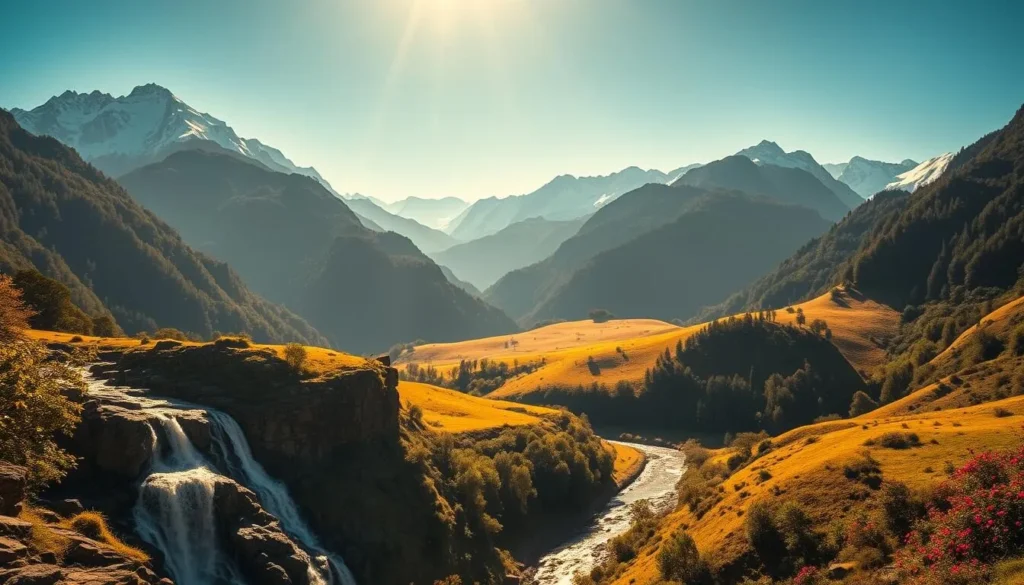
Best Time to Visit the Andes Mountains in Venezuela
The dry season, from December to April, is considered the best time to visit the Venezuelan Andes. During these months, the weather is generally clear and pleasant, with temperatures in cities like Mérida ranging from the mid-60s to low 70s°F (18-22°C) during the day. For those interested in seeing the region’s waterfalls at their peak, consider visiting during the early part of the rainy season (May-June). Outdoor activities like hiking and mountain biking are best enjoyed during the dry season when trails are clear and weather conditions are favorable.
Visiting during the dry season also coincides with holiday celebrations in Venezuela, offering a chance to experience local culture. However, it’s worth noting that accommodations may be more crowded and expensive during this time.
Ride the Merida Cable Car (Teleférico de Mérida)
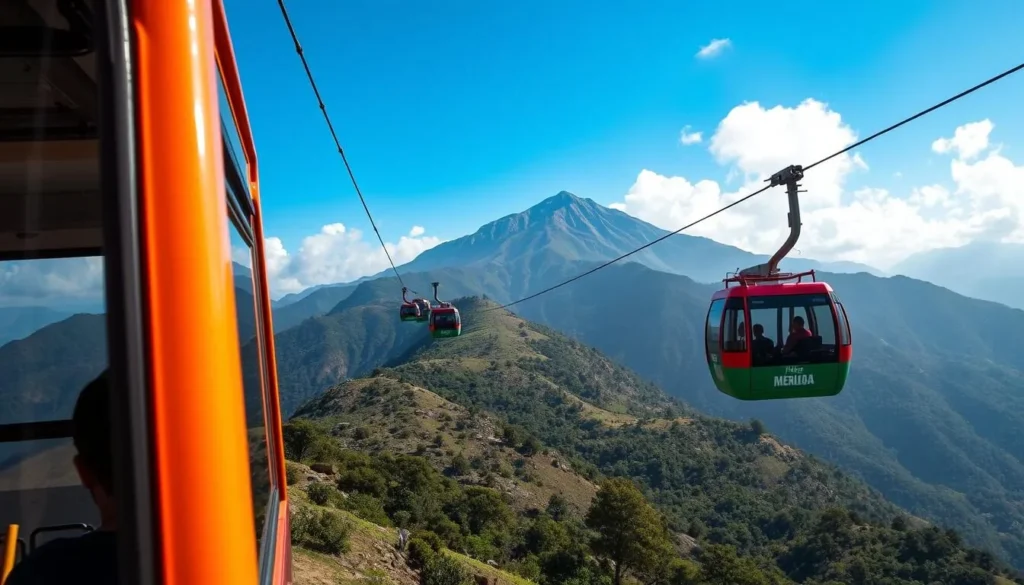
Experience the thrill of riding the Merida Cable Car, one of Venezuela’s most iconic attractions. The Teleférico de Mérida is an engineering marvel that takes you on a journey through the Andes Mountains, offering breathtaking views and unique experiences at each of its four stations.
The World’s Highest and Second Longest Cable Car
The Teleférico de Mérida is recognized as the world’s highest and second-longest cable car, stretching to an altitude of 4,765 meters at its peak, Pico Espejo. This engineering feat provides an unparalleled adventure, taking approximately 50 minutes to complete the journey.
What to Expect at Each Station
The journey begins at the Barinitas station in Mérida city, where you can find ticket offices and information about the surrounding ecosystem. As you ascend, you’ll stop at La Montaña station (3,452 meters), La Aguada station (3,960 meters), and finally, Pico Espejo station (4,765 meters). Each station offers unique viewing platforms and insights into the local flora and fauna, making the journey a visit to remember.
At La Montaña, enjoy dramatic views of the Andean landscape and learn about the cloud forest ecosystem. La Aguada marks the transition to the páramo ecosystem, with its unique high-altitude vegetation. Pico Espejo, the final destination, rewards visitors with panoramic views and cafes to warm up.
Explore Mérida: The Heart of the Venezuelan Andes
Mérida, the heart of the Venezuelan Andes, is a city that seamlessly blends history, culture, and adventure. As a university town centered around the prestigious Universidad de Los Andes, Mérida boasts a vibrant cultural scene.
Historic Center and Plaza Bolivar
The historic center of Mérida is a place to visit and explore, with Plaza Bolivar being a key attraction. This iconic square is surrounded by significant landmarks and offers a glimpse into the city’s rich history. You can visit the surrounding areas, take in the local architecture, and enjoy the lively atmosphere.
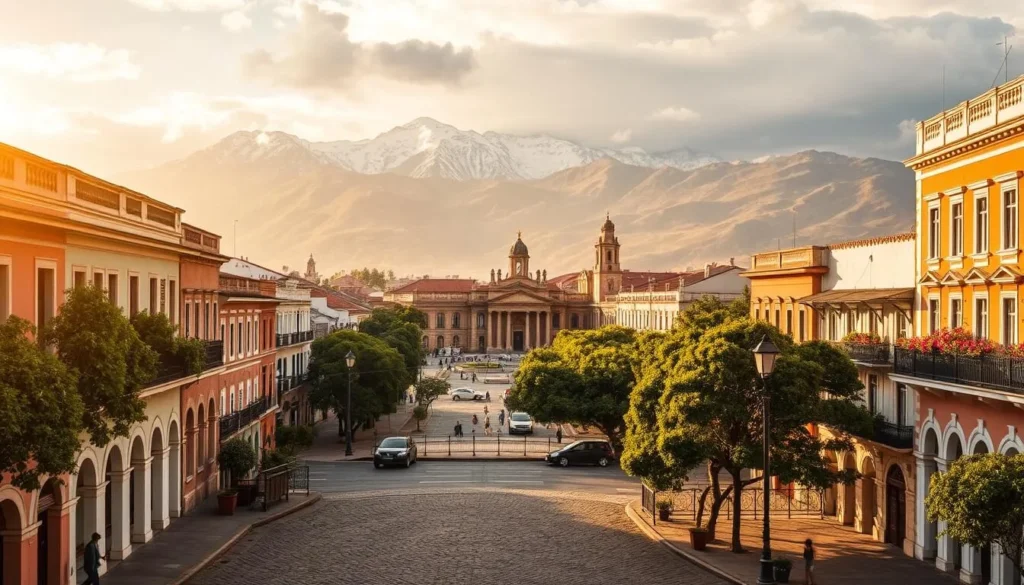
Cultural Attractions in Mérida
Mérida is home to a variety of cultural attractions that showcase its heritage. The Botanical Garden, managed by the Universidad de Los Andes, is a celebrated center for biodiversity conservation and environmental education. You can explore trails through different ecosystems, including cloud forests and endemic plant areas, and participate in educational programs.
Some of the top cultural attractions include:
- The Museum of Modern Art, featuring an impressive collection of Venezuelan and international contemporary works.
- The Museo Arqueológico de la Universidad de Los Andes, offering insights into pre-Columbian cultures.
- The Science Museum, providing interactive exhibits on natural phenomena.
- Heladería Coromoto, famous for its wide variety of ice cream flavors.
These attractions make Mérida a fascinating place to visit Venezuela and experience its rich cultural tapestry.
Hike in Sierra Nevada National Park
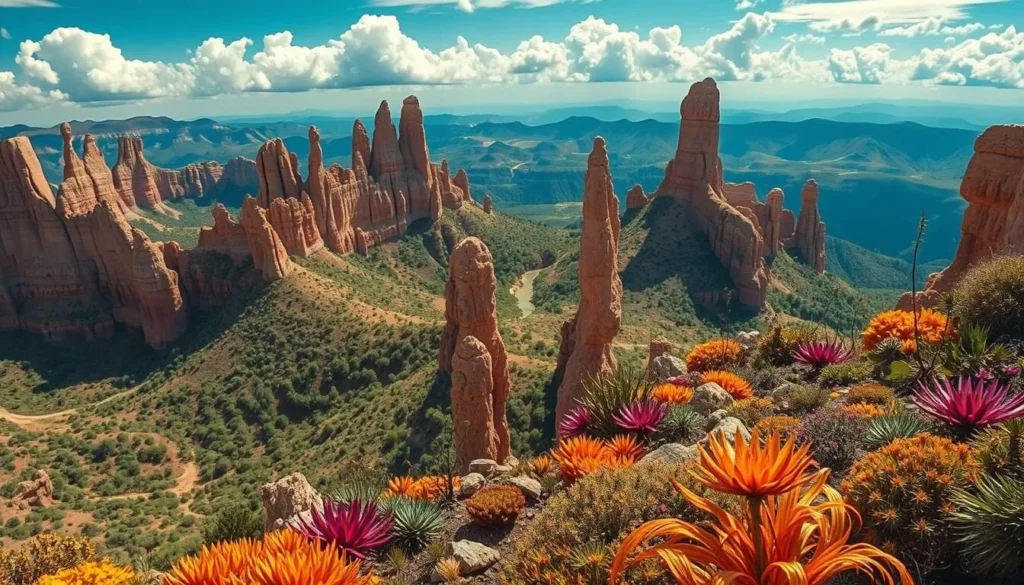
For those who crave adventure and breathtaking landscapes, Sierra Nevada National Park is an unforgettable experience. This impressive park is famous for its rich biodiversity, including endemic species such as the Sword-billed Hummingbird, and several species of orchids and bromeliads unique to the Venezuelan Andes.
Popular Hiking Trails and Routes
Sierra Nevada National Park offers a variety of hiking trails for different skill levels. The park’s diverse elevation zones support distinct plant communities, from the lush vegetation of the lower cloud forests to the specialized plants of the páramo.
The trails range from easy day hikes to more challenging multi-day treks, allowing visitors to explore the park’s vast wilderness.
Flora and Fauna of the Park
The park is a biodiversity hotspot, home to numerous endemic species that have evolved in isolation in these high Andean ecosystems. You can spot rare bird species like the Sword-billed Hummingbird and the Andean Cock-of-the-rock.
The park’s numerous streams and lakes support specialized aquatic life, including endemic frog species that are increasingly threatened by climate change and habitat loss, highlighting the importance of water conservation in the national park and the park as a whole.
Visit the Mucubají Lagoon
If you’re looking for a serene and picturesque destination, the Mucubají Lagoon is ideal. Located in the Venezuelan Andes, this beautiful lagoon offers a tranquil atmosphere and stunning scenery.
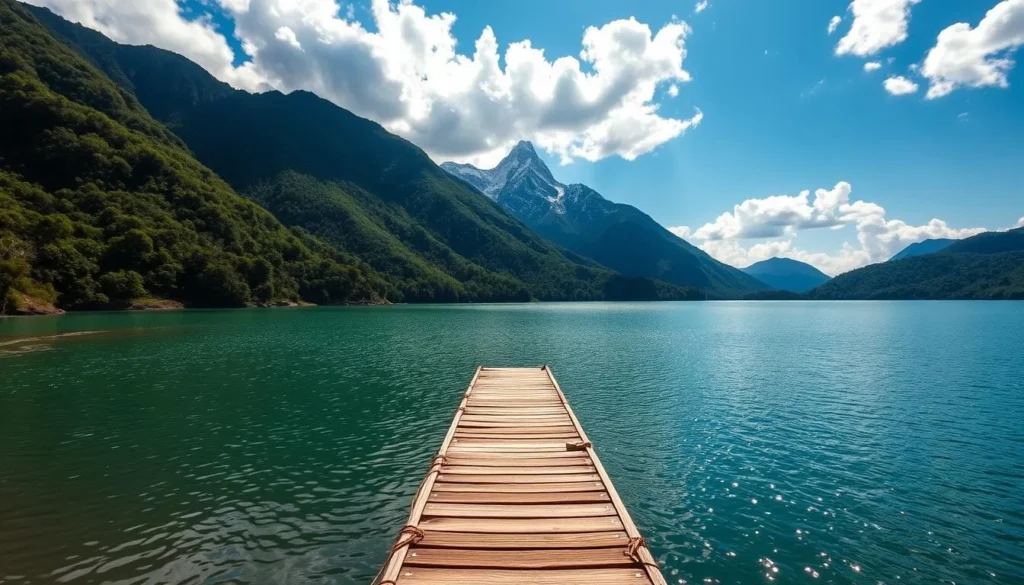
Activities Around the Lagoon
You can enjoy various activities around the Mucubají Lagoon, making your trip even more memorable. The area offers opportunities for hiking and taking in the breathtaking views of the surrounding mountains. You can also explore the local flora and fauna, making it a great place to visit for nature lovers.
How to Get There from Mérida
Reaching the Mucubají Lagoon from Mérida takes about two hours by road, and you can travel by car, bus, or organized trip. The scenic drive along the Trans-Andean Highway is part of the experience, with breathtaking views of valleys and mountains. If you prefer to drive, you can rent a car in Mérida and enjoy the flexibility to stop at viewpoints along the way. Public buses are also available, offering an economical option, though their schedules may vary. It’s a good idea to check the time and road conditions before you depart, especially during the rainy season.
Climb Pico Bolívar: Venezuela’s Highest Peak
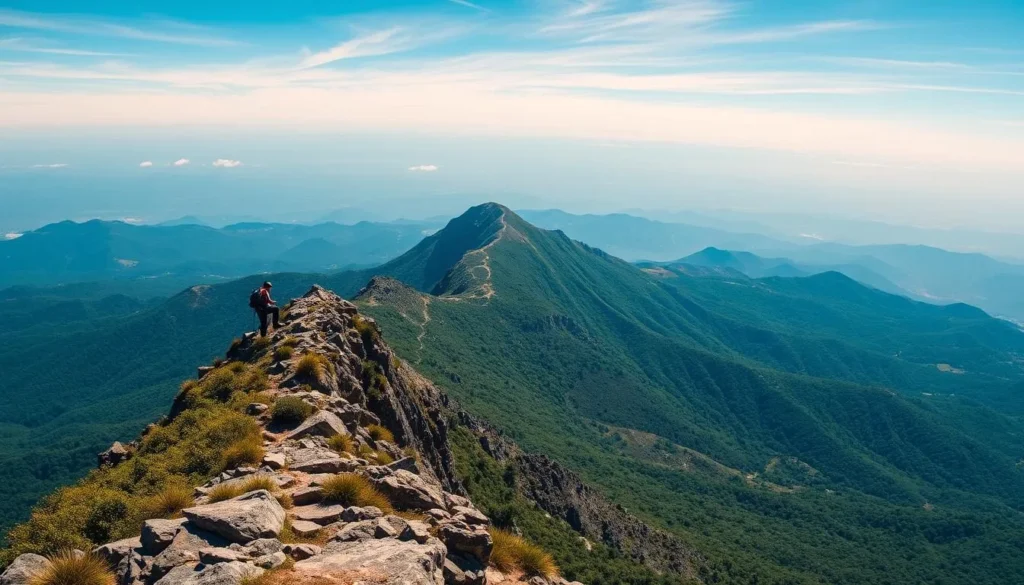
Conquering Pico Bolívar, Venezuela’s highest peak, is an adventure of a lifetime for experienced mountaineers. The ascent typically starts from the La Aguada station of the Merida Cable Car, involving a 12-kilometer route that requires technical climbing skills. It’s highly recommended for climbers to be accompanied by certified guides to ensure a safe and successful climb.
Climbing Routes and Difficulty Levels
The climb to Pico Bolívar involves various routes with differing difficulty levels. The most common route is considered challenging due to its technical requirements and high altitude. Climbers should be well-prepared and have prior experience with high-altitude climbing.
Essential Equipment and Preparation
Proper preparation is key to a successful climb. This includes:
- Acclimatization: Spend at least 2-3 days in Mérida (1,600 meters) before ascending to higher elevations.
- Essential equipment: Sturdy hiking boots, layered clothing, waterproof outer layer, warm hat, and gloves.
- Technical gear: Helmet, harness, carabiners, and potentially crampons and an ice axe, depending on the season and route conditions.
- Sun protection: High-SPF sunscreen, UV-protection sunglasses, and a brimmed hat.
- A well-stocked first aid kit and emergency communication devices.
Hiring a certified local guide is strongly recommended, even for experienced climbers, to ensure you’re aware of the current route conditions and emergency procedures.
Explore the Páramo Ecosystem
You’ll feel as if you’re walking on another planet when you explore the Páramo ecosystem, characterized by its unique frailejones (Espeletia species) with woolly leaves that protect against the cold.
Unique Flora of the Venezuelan Páramo
The Venezuelan Páramo is home to a diverse range of flora that has adapted to the harsh, high-altitude conditions. The frailejones are a standout feature, with their large, woolly leaves that give the landscape an otherworldly appearance. Other vegetation includes grasses and shrubs that are resilient to the extreme temperatures and winds.
Best Spots for Páramo Exploration
Some of the best places to visit for Páramo exploration include the Páramo de Piedras Blancas, known for its white rock formations, and the Los Nevados trail, which offers an immersive experience through extensive páramo zones. The area around Mucubají Lagoon is also a great destination, providing well-maintained trails and picturesque views.
| Location | Features | Accessibility |
|---|---|---|
| Páramo de Piedras Blancas | White rock formations, unique páramo vegetation | Short hike from Trans-Andean Highway |
| Los Nevados Trail | Extensive páramo zones, minimal elevation gain | Moderate hike |
| Mucubají Lagoon | Picturesque views, well-maintained trails | Easily accessible from Mérida |
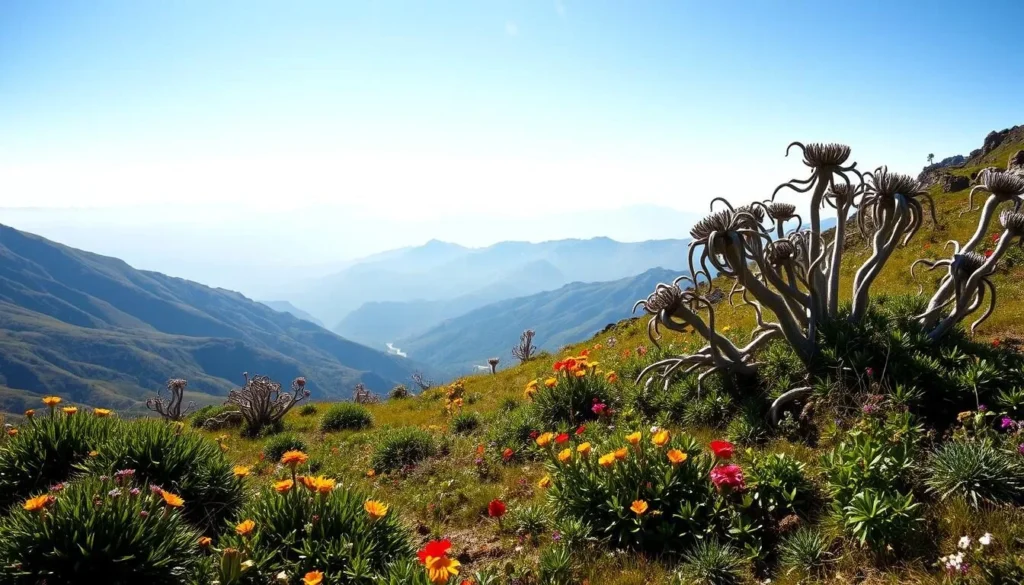
Visit the National Astronomical Observatory
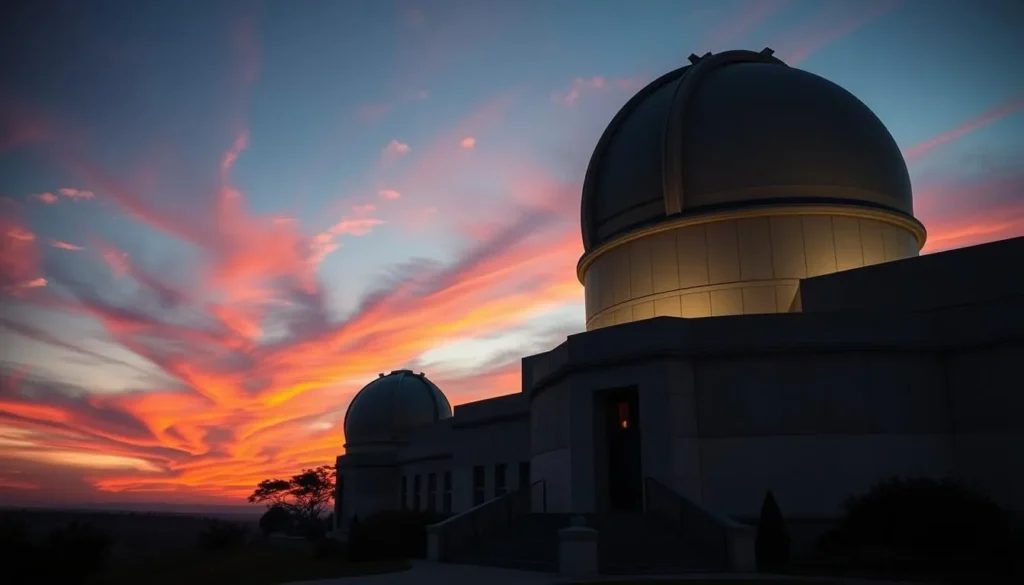
Located in the heart of the Venezuelan Andes, the National Astronomical Observatory is a must-visit site for astronomy enthusiasts. At an altitude of 3,600 meters above sea level, this observatory offers optimal conditions for astronomical observation.
Stargazing Opportunities
The observatory provides guided tours that explain the research carried out and allows visitors to observe stars, planets, and other celestial bodies through its advanced telescopes. It’s an ideal spot for those fascinated by the night sky.
Scientific Importance and Visitor Information
The Llano del Hato National Astronomical Observatory has been a significant center for astronomical research since 1975. Visitors can explore the facility during daytime hours, and nighttime observation sessions are available on select evenings. The entrance fee is approximately 5€, with additional charges for special programs.
Experience Local Andean Cuisine
Indulge in the local Andean cuisine, a delicious blend of indigenous and Spanish influences that will leave you wanting more. The Venezuelan Andes offer a unique gastronomic experience, with dishes made from fresh local ingredients and traditional cooking methods.
Traditional Flavors
The region is known for its hearty dishes, often featuring meats, potatoes, and vegetables. You should try the local specialties such as Pabellón Criollo, a traditional dish made with shredded beef, beans, and rice, and Cachapas, corn pancakes filled with cheese or meat. These dishes showcase the rich culinary heritage of the Andes.
Best Eateries in the Region
When it comes to dining, the Venezuelan Andes have plenty of options. Here are some top recommendations:
| Restaurant | Specialty | Price Range |
|---|---|---|
| Pastelitos La Parroquia | Savory pastries | €1-€2 |
| La Vina | Venezuelan grill | €5-€9 |
| Coromoto Ice Cream Parlor | Over 1000 flavors of ice cream | Affordable |
These restaurants offer a taste of the local culture and are a must-visit when exploring the Venezuelan Andes. Enjoy your culinary journey through this beautiful region!

Andes Mountains, Venezuela: Best Things to Do for Adventure Seekers
Adventure seekers will find their haven in Mérida, with its diverse range of thrilling activities. The region offers a unique blend of natural beauty and adrenaline-pumping experiences that cater to all levels of adventure enthusiasts.
Paragliding and Mountain Biking
For those looking to soar to new heights, paragliding in Mérida provides breathtaking views of the Andes Mountains. Meanwhile, mountain biking enthusiasts can explore the rugged terrain, navigating through challenging trails that wind through the picturesque landscape. Both activities offer an exhilarating way to experience the natural beauty of the region.
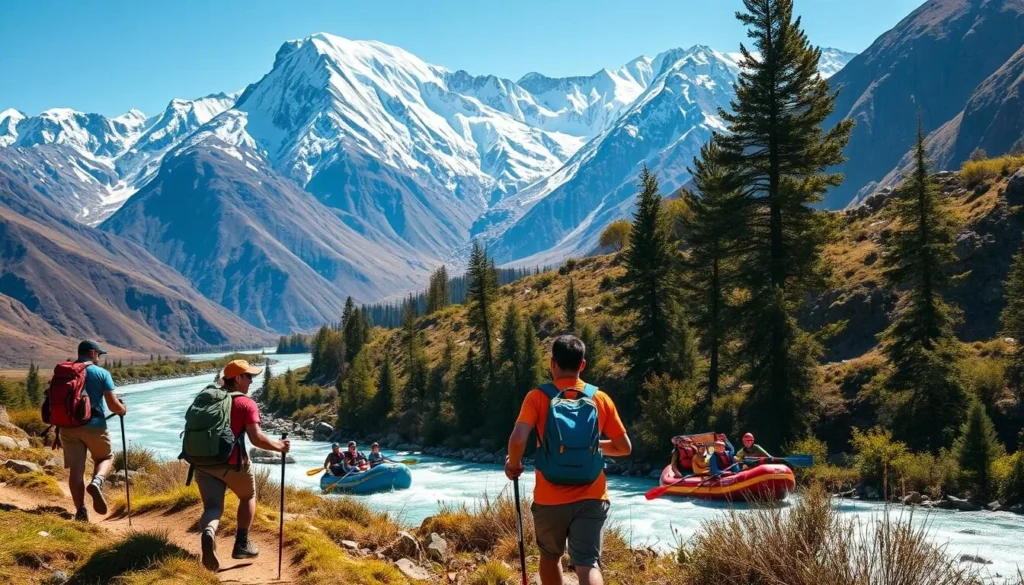
White Water Rafting and Rock Climbing
The rivers flowing from the Andes create perfect conditions for white water rafting, with the Río Chama offering rapids suitable for various skill levels. For rock climbing enthusiasts, the limestone and granite formations provide routes for all abilities, from beginner-friendly crags to challenging multi-pitch climbs. Local operators offer guided experiences and necessary equipment, ensuring a safe and enjoyable adventure.
Planning Your Trip to the Venezuelan Andes
Whether you’re an adventure seeker or a nature lover, the Venezuelan Andes have something to offer, but planning is crucial. The best time to visit is during the dry season, from December to April, when clear skies provide optimal conditions for hiking and enjoying the spectacular views from the cable car.
To get to Mérida, the gateway to the Venezuelan Andes, you can fly into Caracas and then take a domestic flight to El Vigía airport, followed by a 1.5-hour drive to Mérida. Alternatively, you can take a 10-12 hour bus journey directly from Caracas. Accommodation options range from budget hostels in Mérida city to luxury posadas in the surrounding mountains.
When planning your trip, consider safety by acclimatizing to the high altitude, carrying sufficient water and sun protection, and checking weather forecasts before mountain excursions. With proper planning, you can have a safe and enjoyable experience in this spectacular region.
—
The above is subject to change.
Check back often to TRAVEL.COM for the latest travel tips and deals.
